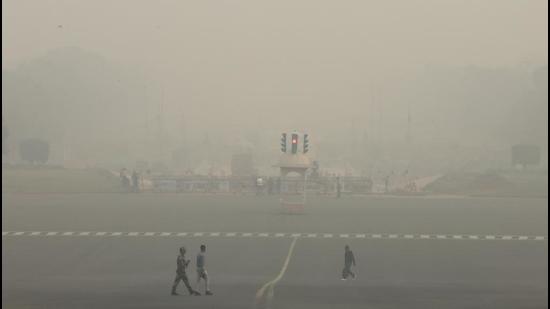Pulp-it | Why Delhi is choking
For eight days till Thursday, the Central Pollution Control Board’s daily bulletin reported an AQI level that is either severe or at the high end of the very poor category. Friday’s reading, too, was in the severe category
The yellow fog did rub its back upon the windows of my car as I drove into work on Friday, but although it was early (a little before 7 am actually) on a soft November morning, it didn’t do a curl and fall asleep. It seems somehow apt to borrow references from TS Eliot (he did, after all, write a poem called The Wasteland) to describe what India’s capital is going through right now.

For eight days till Thursday, the Central Pollution Control Board’s daily bulletin (it takes into account the 24 hour average of the Air Quality Index as of 4 pm that day) reported an AQI level that is either severe (above 400) or at the high end of the very poor category (300-400; indeed, the lowest it has been in these eight days is 372). Friday’s reading, too, was in the severe category.
Delhi’s AQI was largely in the moderate category through the first fortnight of October (it even ventured into “satisfactory” territory on a few days). It spent much of the last week of October in the poor category (with a surprising detour to satisfactory on one day). AQI in the range of 200-300 is defined as poor, 100-200, moderate, 50-100, satisfactory, and 1-50, good. According to CPCB, when it is moderate, it causes “breathing discomfort in people with asthma, and lung and heart diseases”; when it is poor, it results in “breathing discomfort to most people on prolonged exposure”; when it is very poor, it causes “respiratory illness on prolonged exposure”; and when it is severe, it “affects healthy people and seriously impacts those with existing diseases”.
Delhi’s AQI is usually poor (and sometimes very poor) at this time of the year due to a variety of intrinsic and seasonal factors, including vehicular and construction pollution; desertification; garbage burning; lower day and night temperatures; and almost non-existent winds.
It is pushed into the very poor and severe category by stubble burning, which lasts for several weeks in October, and sometimes (as is the case this year, on account of delayed harvests) November. It is also pushed into the very poor and severe category for a few days every year on account of the use of fireworks to mark Diwali. And the results of these are evident.
What complicates matters this year is an ongoing farm protest (against farm laws legislated last year) and a coming election in Punjab, which accounts for the most cases of stubble burning. Even in a normal year, few governments are willing to penalise farmers for any reason; it is not surprising that, with only a few months to go for the assembly election in Punjab, the state government has thus far not filed a single case or complaint on stubble burning against farmers. Nor is it surprising that none of the political parties, including the Aam Aadmi Party which governs Delhi, and is looking to do well in Punjab, wants to target the farmers for stubble burning.
By now, Delhi should have closed recently reopened schools, reduced the number of vehicles on the roads (by perhaps asking workplaces to revert to having people work from home), cracked down on garbage burning, and barred all construction. None of that has happened.
On paper, Delhi has a commission to manage air quality, and a well-established protocol for dealing with bad air days. But a combination of inertia, bureaucratese, and far-too-stringent technical criteria on when the air quality is bad enough to require precipitate action have meant that nothing has really been done.
Solving Delhi’s bad air problem requires a strategic and long-term approach, but mitigating Delhi’s bad air days requires quick fixes. The first has been hobbled by a lack of imagination; the second, by inaction.
R Sukumar is the editor-in-chief of Hindustan Times
Pulp-it is a weekly column for HT Premium subscribers
The views expressed are personal
All Access.
One Subscription.
Get 360° coverage—from daily headlines
to 100 year archives.



HT App & Website






